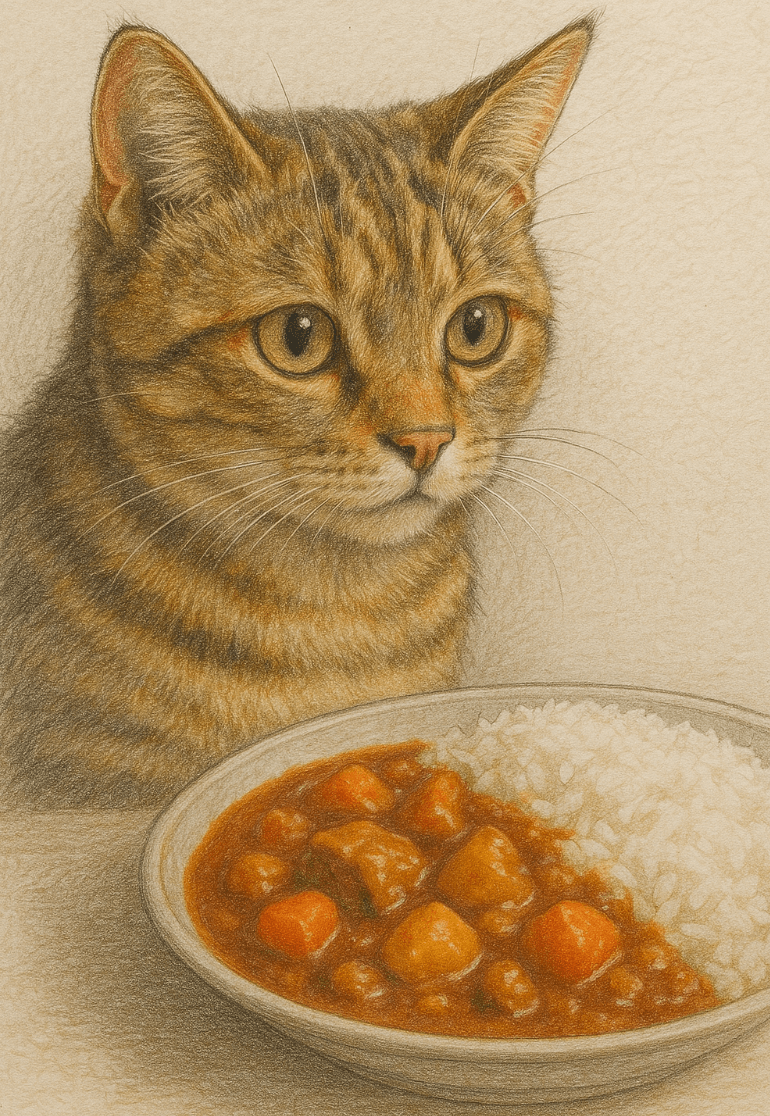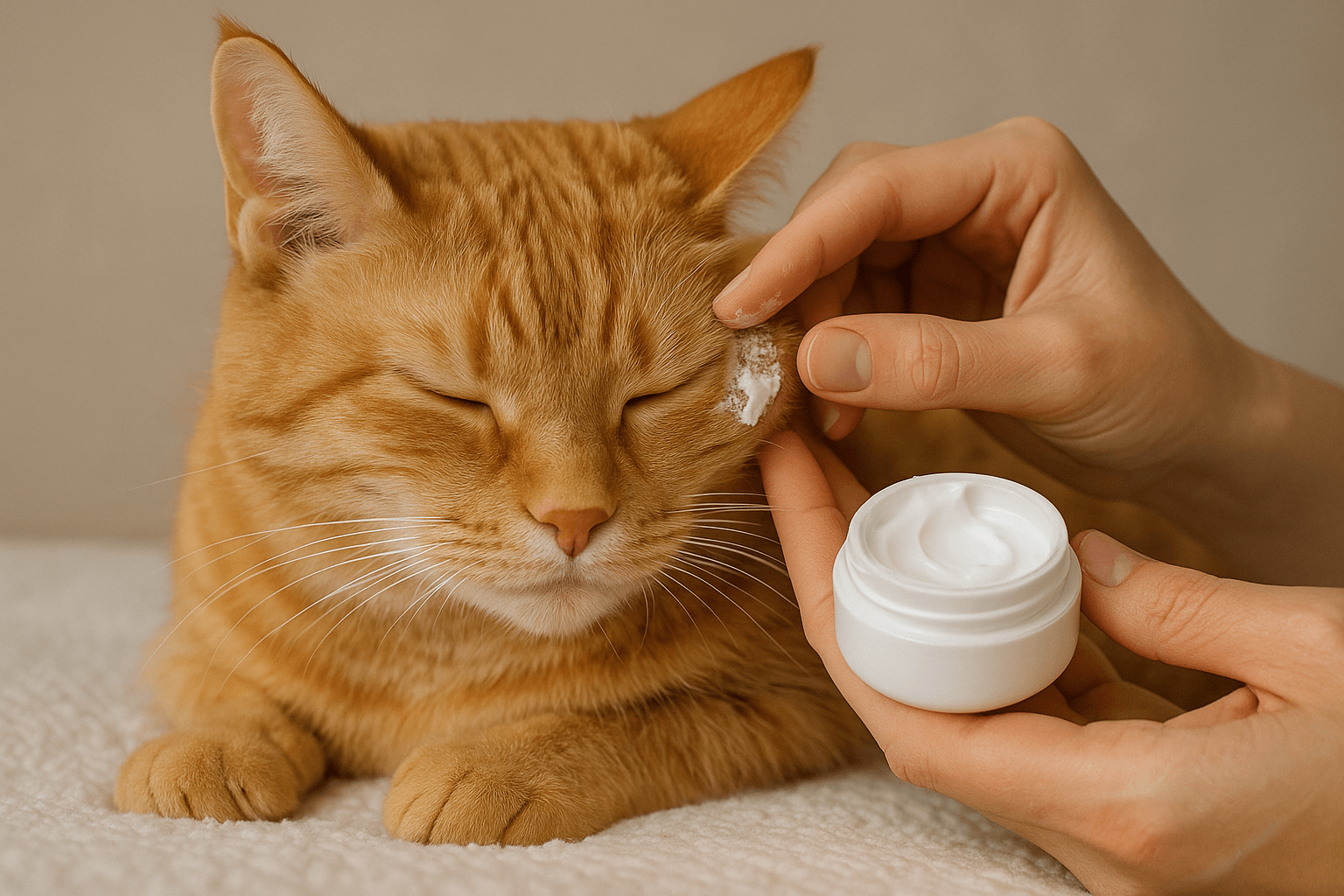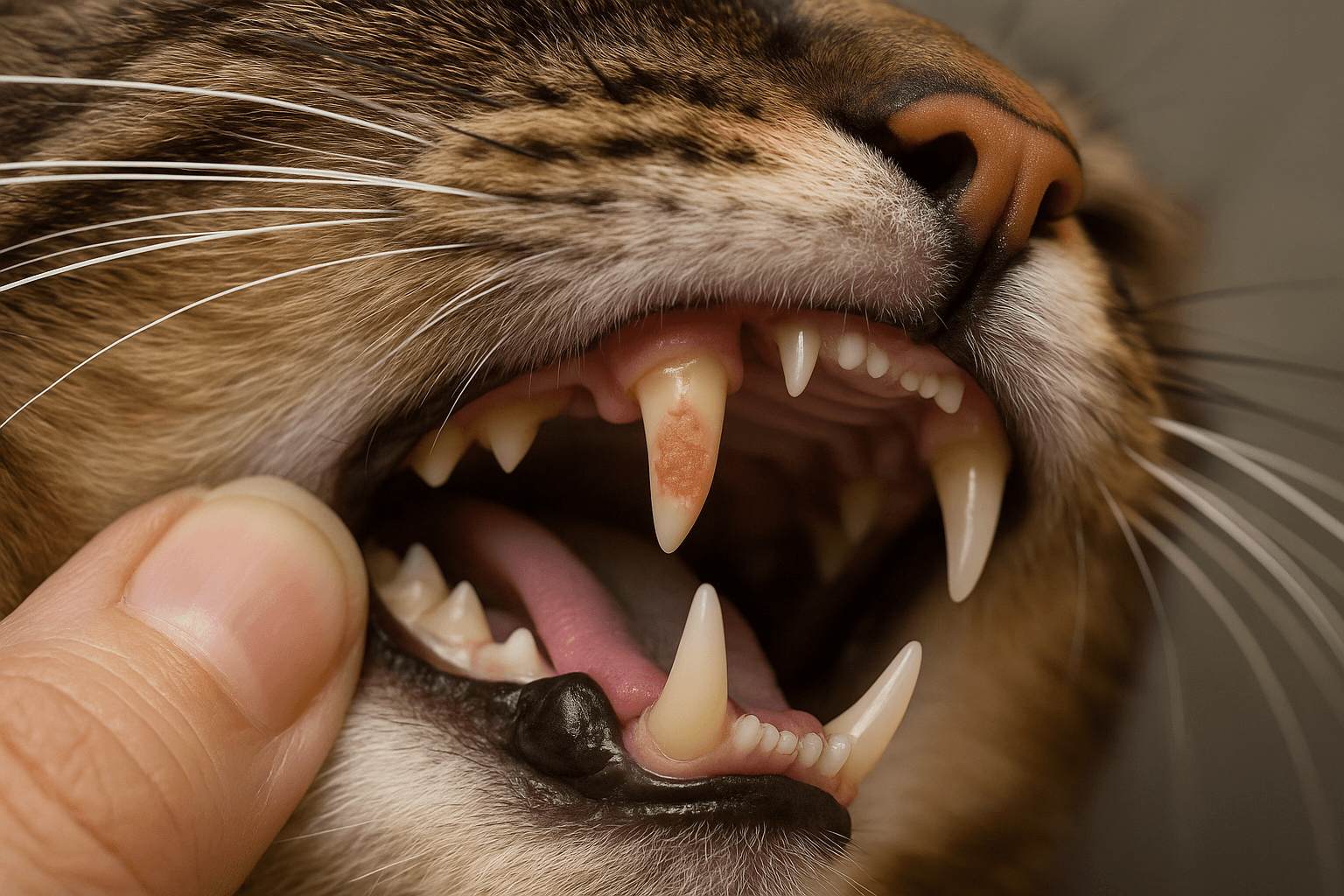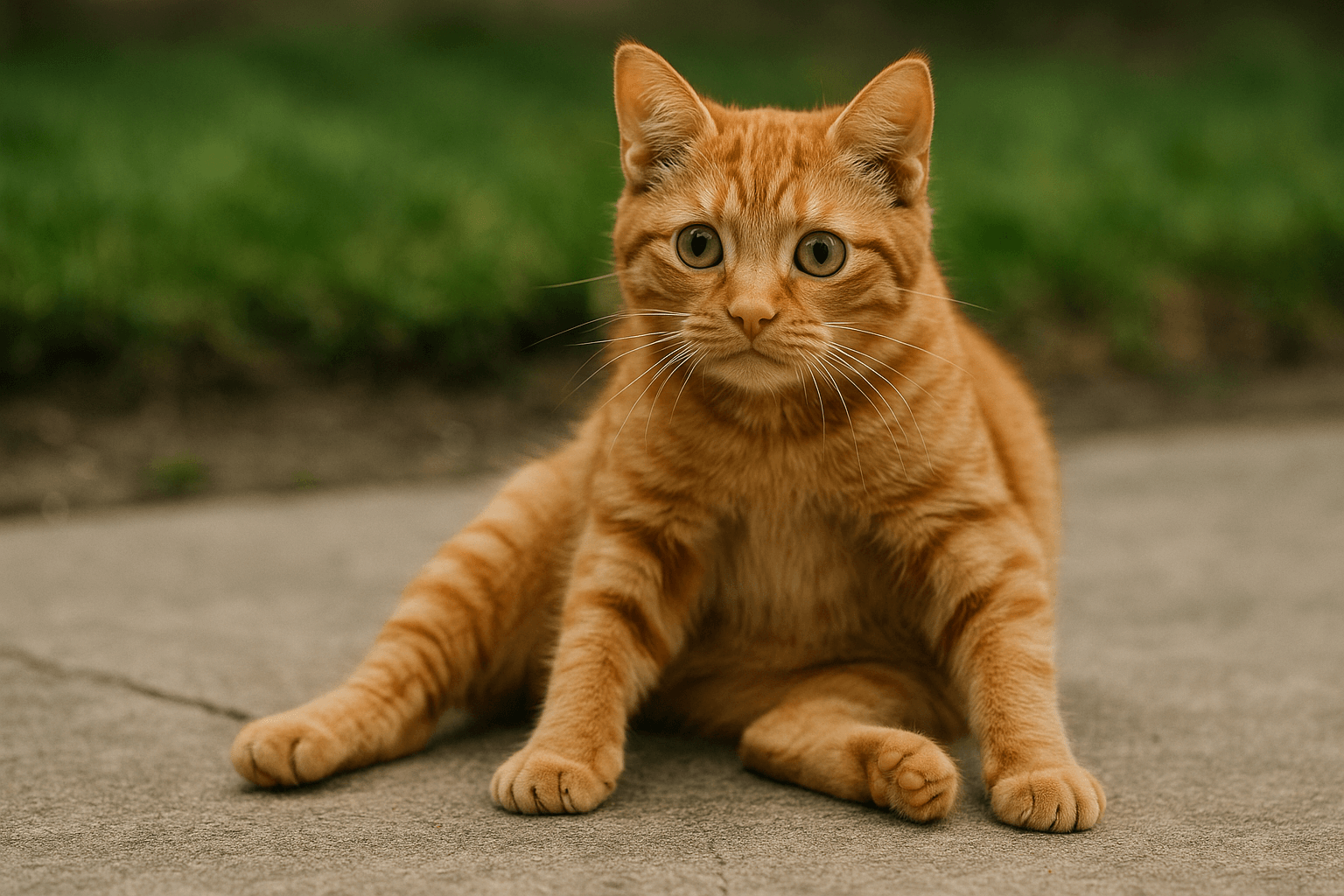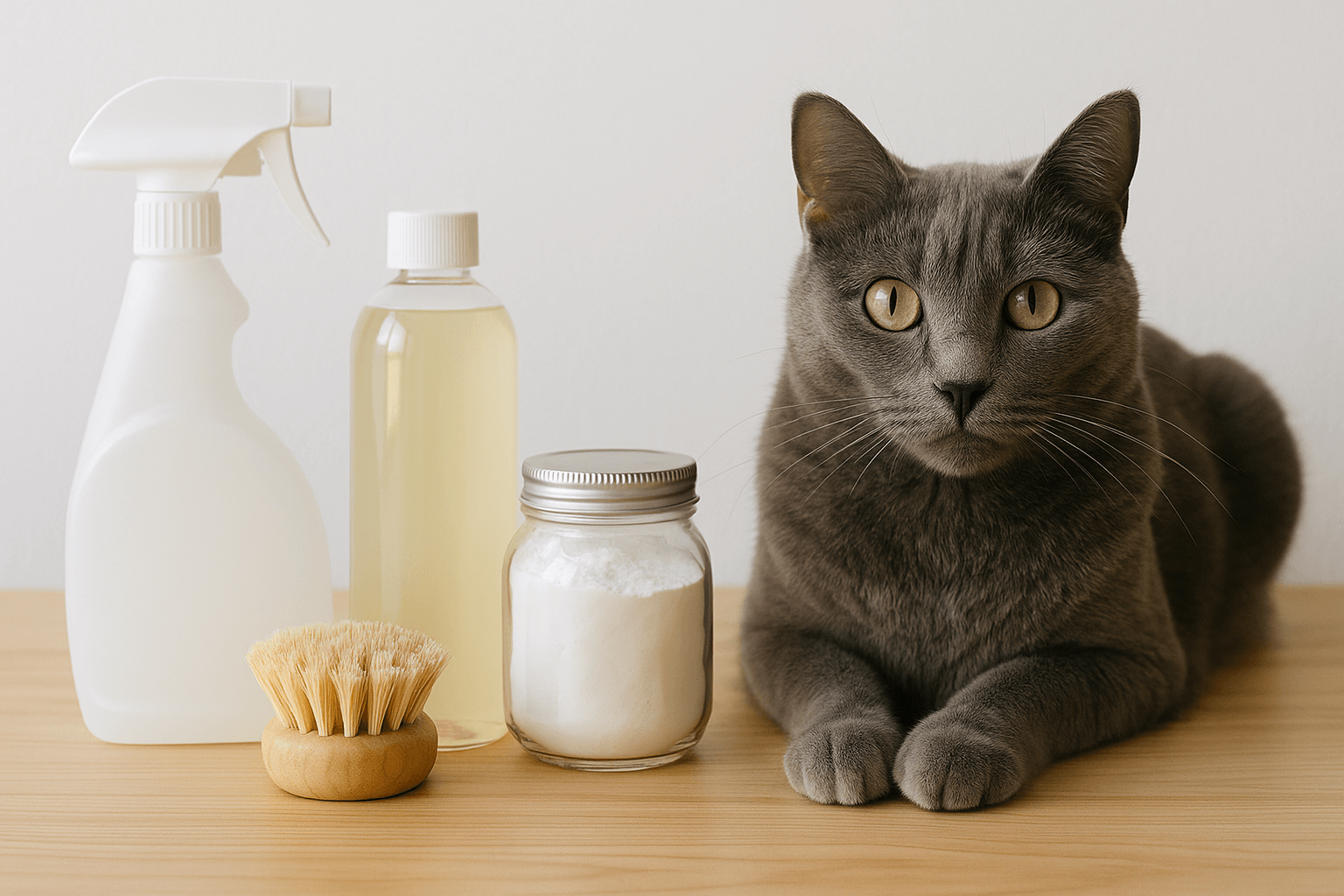Can Cats Eat Curry?
Cats are naturally curious creatures, and their interest in your plate of curry might leave you wondering if it’s safe to share this flavorful dish with them. While the aroma of spices may be tempting for your feline friend, not all ingredients in curry are suitable for cats. Understanding what makes curry potentially harmful—and how to safely introduce certain elements—can help you make informed decisions about your cat’s diet. In this blog post, we’ll explore whether cats can eat curry, the risks involved, and safer alternatives to satisfy their curiosity without compromising their health.
Potential Risks of Feeding Curry to Cats
While curry may seem like a harmless treat, many of its ingredients can pose significant risks to your cat’s health. Here are some key concerns to keep in mind before sharing your curry with your furry companion.
Spices Can Be Toxic:
Many spices used in curry, such as garlic, onion, and chili powder, are toxic to cats and can damage their red blood cells or irritate their digestive system.High Fat Content:
Creamy curries often contain high levels of fat, which can lead to pancreatitis or obesity in cats if consumed regularly.Salt and Seasonings:
Excessive salt and seasoning can cause dehydration, sodium poisoning, or kidney strain in cats.Dairy Products:
Many curries include dairy like cream or yogurt, but most cats are lactose intolerant and may experience digestive upset.Artificial Additives:
Store-bought curry sauces may contain preservatives, artificial flavors, or sugars that are harmful to cats.
These risks highlight why it’s essential to approach feeding curry to your cat with caution and prioritize their well-being.
Safe Ingredients in Curry That Cats Might Enjoy
While traditional curry isn’t suitable for cats, some ingredients can be adapted into cat-friendly treats when prepared carefully. These options allow you to share a taste of curry without endangering your pet.
Plain Cooked Chicken:
Chicken is a protein-rich ingredient that cats love. Serve it plain, without spices or sauces, as a healthy alternative.Steamed Vegetables:
Mild vegetables like carrots or peas (without spices) can be offered in small amounts as a nutritious snack.Turmeric in Moderation:
Turmeric has anti-inflammatory properties, but it should only be given in tiny amounts and under veterinary guidance.Rice or Plain Grains:
Plain, cooked rice is easy to digest and can be mixed with other cat-safe foods for variety.Bone Broth (Unseasoned):
A small amount of unseasoned bone broth can add flavor without the harmful effects of spices.
By focusing on these safe ingredients, you can create cat-friendly versions of curry-inspired meals.
Check this guide 👉Can Cats Eat Artichokes? Best 7 Expert Tips!
Check this guide 👉Can Cats Eat Venison? Best 7 Expert Tips!
Check this guide 👉Can Cats Eat Baby Food? Best 7 Expert Tips!
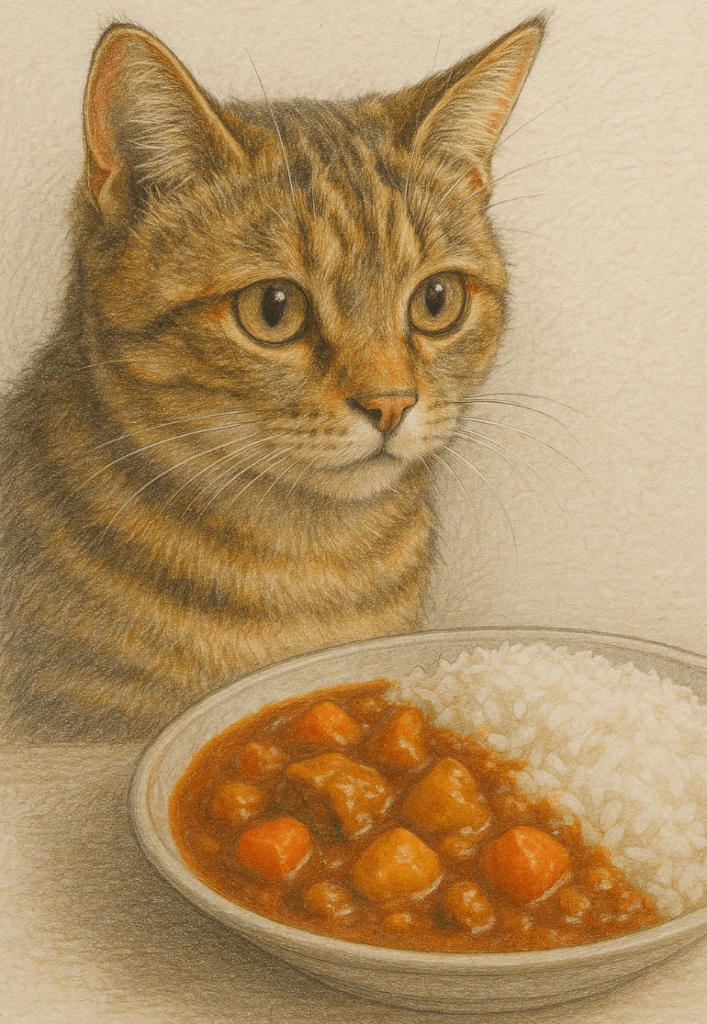
Cat-Safe Foods from Curry Recipes | Ingredients to Avoid Completely |
|---|---|
Plain cooked chicken | Garlic, onions, and chives |
Steamed carrots or peas | Chili powder, cayenne pepper, or hot sauce |
Unseasoned rice or quinoa | High-fat cream or coconut milk |
Tiny amounts of turmeric | Artificial additives and preservatives |
Bone broth (unsalted and unseasoned) | Salt-heavy seasonings and spices |
Signs Your Cat May Have Eaten Unsafe Curry Ingredients
If your cat accidentally consumes unsafe curry ingredients, it’s important to recognize the symptoms early so you can seek veterinary care promptly. Watch for these warning signs.
Vomiting or Diarrhea:
Gastrointestinal upset is one of the first signs that your cat has ingested something toxic.Lethargy or Weakness:
If your cat seems unusually tired or uninterested in activity, it could indicate toxicity or dehydration.Difficulty Breathing:
Spices like chili or excessive salt can irritate a cat’s respiratory system, causing labored breathing.Excessive Drooling:
This is a common reaction to irritation caused by spicy or salty foods.Jaundice or Pale Gums:
Signs of anemia, such as yellowing gums or pale mucous membranes, may occur if toxic ingredients damage red blood cells.
Recognizing these signs allows you to act quickly and prevent further complications.
How to Safely Introduce New Flavors to Your Cat
If you want to introduce new flavors to your cat’s diet, including those inspired by curry, follow these guidelines to ensure their safety and enjoyment.
Start Small:
Offer tiny portions of any new food to monitor how your cat reacts before giving larger amounts.Avoid Spices and Seasonings:
Stick to plain, unseasoned ingredients to avoid irritating your cat’s sensitive digestive system.Consult Your Veterinarian:
Always check with your vet before introducing unfamiliar foods, especially herbs or spices like turmeric.Observe for Allergic Reactions:
Watch for symptoms like itching, swelling, or vomiting, which may indicate an allergy or intolerance.Focus on Balanced Nutrition:
Ensure any new additions complement your cat’s existing diet rather than replacing essential nutrients.
Following these steps ensures a safe and enjoyable experience for your curious feline.
Common Mistakes to Avoid When Feeding Cats Human Food
Feeding human food to cats requires caution, as even seemingly harmless items can harm them. Here are some mistakes to avoid when considering sharing your meal with your cat.
Assuming All “Natural” Foods Are Safe:
Just because an ingredient is natural doesn’t mean it’s safe for cats; always research before sharing.Overlooking Hidden Ingredients:
Sauces or marinades may contain hidden toxins like garlic or onion powder, even if the main ingredient is safe.Ignoring Portion Sizes:
Even safe foods can cause issues if given in large quantities; moderation is key.Skipping Veterinary Advice:
Failing to consult your vet can lead to unintentional harm from unfamiliar foods.Not Monitoring for Reactions:
Always observe your cat after introducing new foods to catch adverse reactions early.
Avoiding these mistakes ensures a safer experience for your cat when trying new flavors.
Benefits of a Balanced Diet for Cats
A balanced diet is crucial for maintaining your cat’s overall health and preventing dietary-related issues. Here’s why proper nutrition matters.
Supports Digestive Health:
A diet rich in high-quality proteins and fibers helps maintain a healthy gut and prevents digestive upset.Promotes Healthy Skin and Coat:
Essential fatty acids and vitamins contribute to a shiny coat and reduce skin irritations.Boosts Immune Function:
Proper nutrition strengthens the immune system, helping your cat fight off illnesses more effectively.Maintains Ideal Weight:
Balanced diets prevent obesity, reducing the risk of conditions like diabetes and joint problems.Enhances Energy Levels:
Nutrient-dense foods provide sustained energy, keeping your cat active and playful.
A well-rounded diet ensures your cat thrives physically and mentally.
Fun Ways to Treat Your Cat Without Curry
If your cat is eager for variety in their diet, there are plenty of fun and safe ways to treat them without resorting to risky human foods like curry.
Homemade Cat Treats:
Make simple treats using plain chicken, fish, or pumpkin puree for a tasty and healthy snack.Freeze-Dried Meat Snacks:
These store-bought options mimic the texture of raw meat while being convenient and safe.Interactive Feeding Toys:
Use puzzle feeders to dispense kibble or treats, engaging your cat’s mind during mealtime.Cat Grass or Catnip:
Grow cat grass or offer catnip as a safe way to let your cat explore new tastes and textures.Hydration-Friendly Treats:
Freeze cubes of water mixed with a splash of tuna juice for a refreshing and hydrating treat.
These alternatives provide variety and enrichment without jeopardizing your cat’s health.
Frequently Asked Questions About Cats and Curry
Is it okay to give my cat a small bite of curry?
No, even a small bite can contain harmful ingredients like garlic, onions, or excessive salt.
Can cats eat turmeric?
Turmeric is generally safe in very small amounts, but consult your vet before offering it.
What should I do if my cat eats curry?
Monitor for symptoms of illness and contact your veterinarian immediately if they show signs of distress.
Are there any cat-safe spices?
Most spices are unsafe for cats, but minimal amounts of mild herbs like parsley may be acceptable under supervision.
How can I satisfy my cat’s curiosity about curry?
Prepare cat-friendly versions using plain proteins, steamed veggies, and unsalted broths instead of actual curry.
Prioritizing Your Cat’s Health Over Curiosity
While it’s natural to want to share your favorite foods with your cat, curry poses too many risks to be considered safe. By understanding the potential dangers and focusing on cat-friendly alternatives, you can indulge your cat’s curiosity without compromising their health. Always prioritize their well-being and consult your veterinarian before introducing new foods to their diet. With careful planning and attention to detail, you can keep your feline friend happy, healthy, and satisfied.
Cat Dry Skin Treatment: Best 7 Expert Tips! Discover effective remedies and expert advice to soothe your cat’s dry skin, restore their coat’s shine, and ensure lasting comfort with simple, actionable solutions.
Understanding Cat Tooth Resorption: Best 7 Expert Tips! Discover causes, symptoms, and treatment options to protect your cat’s dental health and ensure a pain-free life.
Cerebellar Hypoplasia in Cats: Best 7 Expert Tips! Discover expert advice on caring for cats with cerebellar hypoplasia, managing symptoms, and creating a safe, loving environment for your wobbly feline friend.
Cat-Safe Cleaning Products: Best 7 Expert Tips! Discover safe, non-toxic cleaning solutions to protect your cat’s health while keeping your home spotless and fresh.

